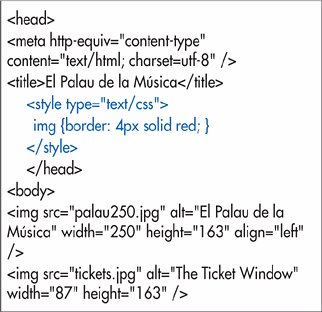Creating an Internal Style Sheet
| Internal style sheets let you set the styles at the top of the (X)HTML document to which they should be applied. If you plan to apply the style sheet to more than one page, you're better off using external style sheets (see page 128). To create an internal style sheet:
Figure 8.13. The result is exactly the same as if you linked to the styles in an external style sheet. The difference is that no other Web page can take advantage of the styles used on this page.
|
EAN: 2147483647
Pages: 340


 Tips
Tips